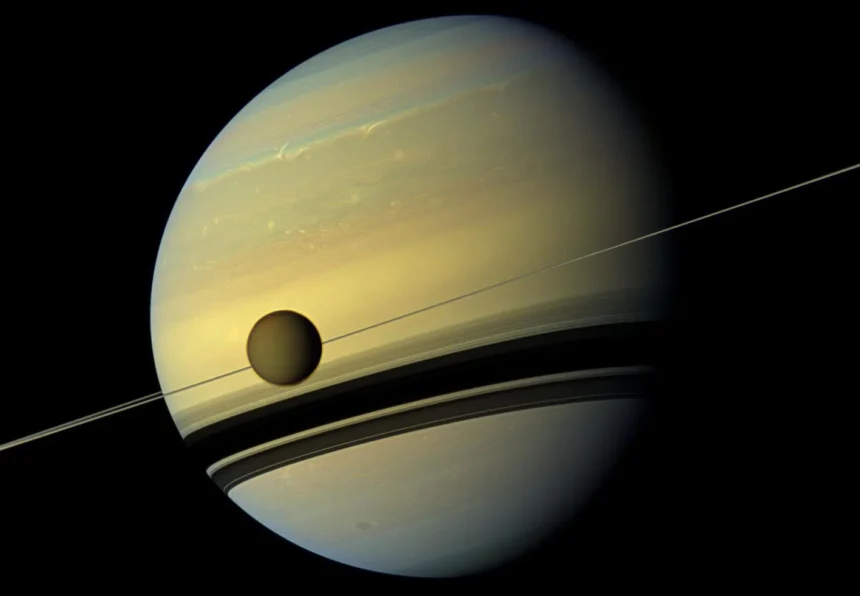NASA’s latest endeavor is to explore Titan, a moon of Saturn. Titan, with its rich organic environment and similarities to the early Earth, presents a rare opportunity to study prebiotic chemistry and potentially the conditions for life.
What’s Happening & Why This Matters
NASA is launching an ambitious mission, named Dragonfly, to Saturn’s largest moon, Titan. This mission marks a significant milestone in space exploration. The project, now green-lit for a whopping $3.35 billion, involves sending a quadcopter drone to traverse Titan’s unique landscape which could offer insights into the organic building blocks of life.

Below are details of the Dragonfly mission:
- Mission Cost and Schedule: Originally proposed at a lower cost, the mission’s budget has now expanded to $3.35 billion with a scheduled launch in July 2028. This adjustment reflects the mission’s growing scope and the technological challenges of deploying a drone so far from Earth.
- Technological Marvel: Dragonfly represents a leap in space exploration technology, being the first mobile robot to land on a body other than the Moon or Mars and significantly larger than any previous drone sent to another planet.
- Scientific Goals: The mission aims to explore more than 30 locations on Titan, analyzing the moon’s surface and atmosphere. This includes studying methane lakes and sand dunes, which are composed of complex carbon chains similar to those that might have existed on the early Earth.
- Potential for Discoveries: Beyond understanding Titan’s environment, Dragonfly will search for biosignatures that could indicate the presence of life, making it a pivotal mission in astrobiology.
TF Summary: What’s Next
As NASA readies Dragonfly, the scientific and aerospace communities eagerly anticipate the wealth of data it will provide. This mission promises to enhance our understanding of Titan and further push our technologies for future explorations of other celestial bodies. With potential to uncover clues about the origins of life, Dragonfly could redefine what science knows about mankind’s place in the cosmos.


